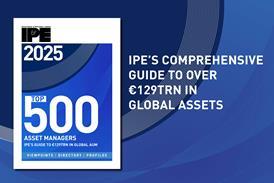The Pensions Regulator (TPR) in the UK expects most pension funds to shift their focus from deficit recovery to endgame planning, with most defined benefit (DB) schemes being in surplus.
According to TPR’s Annual Funding Statement, just over half of UK pension funds (54%) are in surplus on a buyout basis, rising to 76% on a low dependency basis and 85% on a technical provision basis.
This will be the first time schemes complete their valuations under the new DB funding regime, which came into effect last September.
As a result of this healthy funding position, the regulator expects that around 80% of pension funds should be able to meet the ‘Fast Track’ approach. However, for some of these schemes, this might require a change in their existing funding outlook, but this could be done at minimal or no cost to the employer, the regulator said.
With this in mind, TPR has clarified areas surrounding the covenant and the trustee’s assessment of supportable risk.
The regulator said that the employer covenant will remain an integral element to consider when assessing the level of supportable risk within a scheme’s journey plan.
This is particularly important where schemes are poorly funded, large in comparison to the size of the employer, or taking significant levels of risk.
The regulator acknowledged that many schemes are approaching valuations from a relatively healthy funding position but said they should recognise the macroeconomic uncertainty that continues to impact pension fund investments and the employer covenant in different ways.
This includes heightened trade and geopolitical uncertainty, which could introduce further volatility to an already uncertain future path for interest and inflation rates, as well as having implications for global stock markets and the UK’s global economic growth.
It added that trustees should ensure their short-term liquidity and cash flow requirements can be met whilst their longer-term investment strategy continues to reflect the changing economic landscape. Artificial intelligence adoption and energy transition are two other dynamics that may impact investment and employer covenant, it said.
TPR’s director of trusteeship, administration and DB supervision, David Walmsley, said: “Trustees should also be considering how they would respond to potential requests from employers to release some of their scheme’s surplus. We have published a helpful statement on this subject. They should adhere to current legislation and scheme rules regarding funding surpluses.
“We await details on the government’s plans to legislate in the upcoming Pension Schemes Bill.”
In the coming weeks, TPR will launch a new ‘Submit a scheme valuation’ digital service, including a statement of strategy spreadsheet. All information for valuations with effective dates on or after 22 September 2024 must be collated and submitted by schemes using these tools, it said.
The regulator added that guidance will also be published to support trustees considering the best option for their members as they plan their scheme’s endgame.
Clarity
Richard Soldan, partner at LCP and head of LCP’s DB funding group, has welcomed the clarity the statement provides for trustees.
He said: “In this year’s Annual Funding Statement, TPR has helpfully provided more clarity, which will be useful for trustees and employers as they go through their first valuations under the new regime. This includes more detail of the “supportable risk” test – the key integrated risk management step in the new valuation process – where we had encouraged TPR to set out its expectations in more depth.
“With their estimates showing more than 50% of schemes fully funded against a buy-out measure, TPR rightly encourages schemes that are now better funded to be focusing on endgame planning, as well as highlighting the need for all trustees to engage early and collaboratively with their advisers as part of the valuation process.”
Laura McLaren, head of DB scheme actuary services at Hymans Robertson, added that the statement highlights that trustees should not underestimate the time needed to meet the Code’s additional compliance requirements given all the new elements introduced.
“Early planning, working collaboratively with the employer and bringing actuarial, covenant and investment advisers together, are all key steps that will help to smoothly integrate the new regulations.”
Laura McLaren at Hymans Robertson
She said: “Early planning, working collaboratively with the employer and bringing actuarial, covenant and investment advisers together, are all key steps that will help to smoothly integrate the new regulations.”
McLaren added that beyond the immediate requirements of the new funding code, the regulator is also showing a growing interest in DB surpluses.
“Although more specifics on DB surplus and the government’s plans to legislate will come as part of the upcoming Pensions Bill, it is encouraging that TPR are committing to publishing more DB endgame guidance in the coming weeks. This continues to underscore the growing policy focus and intent in this area,” she explained.
She added: “With regulatory reform looking set to meaningfully increase the potential flexibility around surplus, starting to explore scheme-specific circumstances and objectives will be time well spent. This endgame planning will be most effective where trustees and sponsors work together.”
Read the digital edition of IPE’s latest magazine

























No comments yet